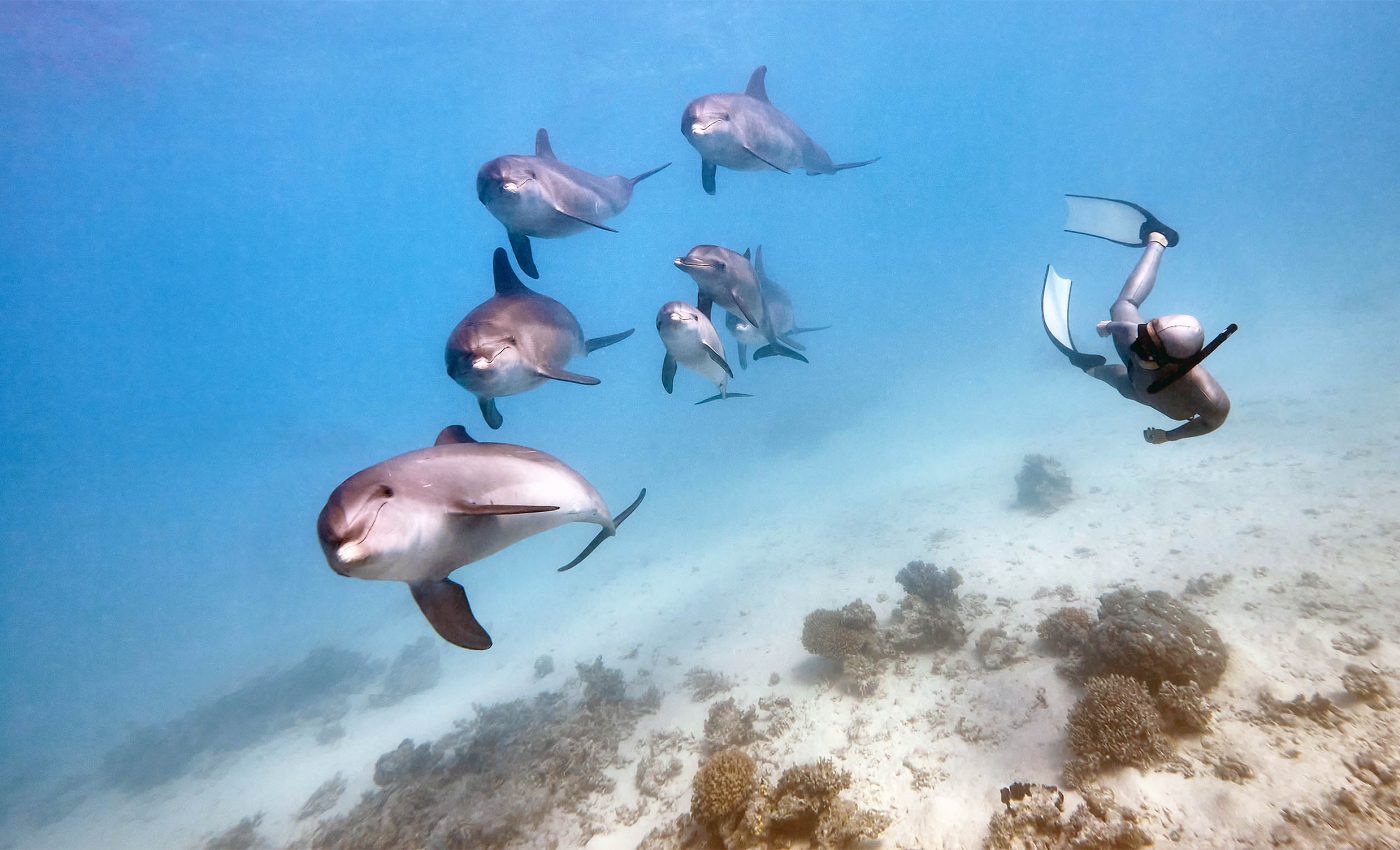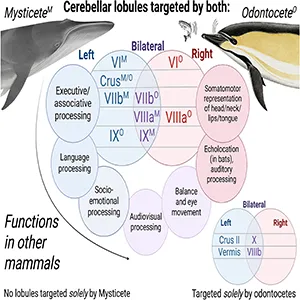
Scientists learn how dolphin brains evolved to 'see' underwater by using sound
Dolphins, like other toothed whales, live in a world of darkness where light fades fast. They stay oriented by sending out quick clicks and reading the echoes, a process known as echolocation.
Each click acts like a tap on the water, letting their brains “feel” distant objects and fish through sound alone.
In a new study, a team of scientists led by the Woods Hole Oceanographic Institution (WHOI) traced how this talent shows up inside the brain.
The study compares the neural wiring of echolocating dolphins to that of a species of non-echolocating baleen whale called a sei whale.
Understanding echolocation – the basics
Echolocation in marine mammals is a sophisticated biological sonar system that allows animals like dolphins, whales, and porpoises to navigate, hunt, and communicate in dark or murky underwater environments.
These mammals emit a series of high-frequency clicks that travel through the water and bounce off objects. By listening to the returning echoes, they can determine the size, shape, distance, speed, and even internal structure of their targets.
This process gives them an incredibly detailed picture of their surroundings, often surpassing what sight alone could provide in deep or cloudy waters.
This adaptation is especially critical for species that live in environments where visibility is limited. For example, deep-diving whales rely on echolocation to locate prey thousands of feet below the surface, where light cannot penetrate.
Echolocation also plays a key role in social behavior, helping individuals coordinate movements or avoid collisions while swimming in pods.
Remarkably, some species can even adjust the frequency and intensity of their clicks to focus on specific tasks, much like humans adjusting the lens on a camera.
Studying echolocation in dolphins
Brain tissue from deceased, stranded animals is hard to obtain and even harder to scan. By partnering with the International Fund for Animal Welfare (IFAW), the team secured enough samples to begin charting auditory circuits in detail.
“Our research sought to understand how the pathways for auditory information differed between echolocating and non-echolocating whales,” said lead author Sophie Flem.
“In humans, primates, rodents, and dogs, we have well-established maps of what parts of the brain contribute to what kind of processing. We don’t yet have those in dolphin brains, which are strikingly unusual compared to terrestrial animal brains,” she added.
Researchers traced signals leaving the inferior colliculus, a mid-brain hub that all mammals share.
In dolphins, this region is oversized, making it an ideal place to follow sound information as it travels into the cortex.
The team found more cortical targets in dolphins than in the sei whale, yet the strength of those links was similar.
Cerebellum’s role in dolphin echolocation
The biggest surprise lay in the pathways heading the other way – down toward the cerebellum.
“While neuroscientists used to think of the cerebellum largely as a center for balance and motor (muscle/movement) control, newer evidence strongly suggests that it serves as an integration center for sensory and motor information and, importantly, a rapid prediction center,” explained co-author Peter Tyack, emeritus research scholar in biology at WHOI.
“Dolphins use echolocation to interact with their world and, unlike hearing and vision, they must produce the energy that then returns to their sensory receptors – echolocation is part hearing and part vocalization,” explained Tyack.

He likened the process to a person using a hand to produce the touch sense feedback that lets him or her find the light switch.
In a similar manner, dolphins move around their echolocation beam to get the feedback they need to function in a dark, underwater environment.
Imaging brains the size of suitcases
Scanning a sei whale brain – nearly three times heavier than a human brain – posed technical challenges.
Oxford’s Karla Miller developed high-signal diffusion sequences, while UC Berkeley’s Ben Inglis optimized collection protocols.
The result is some of the clearest diffusion imagery ever captured from large marine mammal brains.
“Comparative neurobiologists have longed to examine the patterns of connections within dolphin and whale brains for years, believing that the unique evolutionary history of these species will provide new insights into how brains evolve,” said senior author Peter Cook of New College of Florida.
The technology is now available to begin tackling these mysterious nervous systems and finding out how they work.
Mapping dolphin echolocation regions
Cook and colleagues already have more baleen and toothed whale brains queued for study.
“It’s believed that neural control of vocal output has totally shifted in dolphins as they evolved their unique nasal vocal apparatus. We can now map out vocal control in dolphins and how it differs from baleen whales,” remarked Cook.
Both groups of animals have the rare ability to learn new vocal behavior, and dolphin vocal systems are some of the strangest in the animal kingdom.
“Now that we can opportunistically and ethically look inside these animals’ brains, they’re just getting started teaching us,” Cook concluded.
The team hopes that future maps of vocal pathways will reveal how sound production and perception blend together in one of nature’s most sophisticated sonar systems.
The full study was published in the journal PLOS One.
—–
Like what you read? Subscribe to our newsletter for engaging articles, exclusive content, and the latest updates.
Check us out on EarthSnap, a free app brought to you by Eric Ralls and Earth.com.
—–













